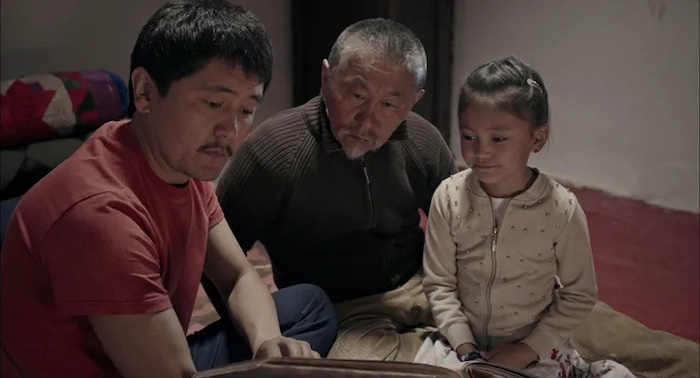
Kyrgyzstan director Aktan Arym Kubat says his latest film is a sequel to his debut fiction feature, The Adopted Son, which came out in 1998. Given that all his subsequent work has been autobiographical in nature, the “sequel” label may need further clarification. It seems to have less to do with an interrupted storyline than with the methods utilized to produce both films. For the most part, Kubat uses the same actors and locations in all his movies, but the actor who played the title character in The Adopted Son is the same actor who plays the son of the protagonist in his latest film, and since Kubat himself plays the father of these characters in both films, This Is What I Remember could be seen as a continuation of The Adopted Son. But that’s where the similarities end.
Kubat plays Zarlyk, who has been missing and presumed dead for 23 years after traveling to Russia for work. His son (Mirlan Abdykalykov), whose name happens to be Kubat, eventually finds a photo of Zarlyk on a website of “unknown persons” and goes to retrieve him, but Zarlyk has no memory of his family because he was injured in an accident shortly after arriving in Russia. Moreover, he was rendered mute. After returning to his home town, he spends his days obsessively collecting garbage in the town while his old friends and his son’s family fret about his mental state. Zarlyk’s return particularly upsets his former wife, Umsunai (Taalaikan Abazova), who, believing him dead, has remarried. Her new husband is the town’s much despised loan shark, Jaichy (Nazym Mendebairov), a man of means who drives a Lexus and lives in a compound. For most of the film, Zarlyk’s friends and relatives endeavor to make him remember his old life, often in comical ways that might feel cruel to the average viewer, but soon the normal rhythms of life take over and while Zarlyk’s responses to his environment don’t change significantly, the dynamic in his relationships does; that is, until Umsunai expresses interest in reconnecting with Zarlyk, a possibility that angers Jaichy’s mother, Kadicha (Anar Nazarkulova), who, in accordance with the tenets of Islam that hold forth in the compound (though not so much among the townspeople, who are comparatively carefree about religion), looks upon Umsunai as her personal servant. She tries to get the town elders to commit Zarlyk to a psychiatric institution, saying he is a danger to the community, citing as evidence a fire that was believed to have been started by Zarlyk.
What’s intriguing about Kubat’s choices is the way he approaches Zarlyk’s condition, which doesn’t change appreciably over the course of the movie. Instead, it is others’ reactions to his condition that change, and within that contrast we realize Zarlyk does have something that can be called a memory. It’s just that it isn’t what people expect it to be. Zarlyk has basically embarked on a new life, one in which he accumulates new memories that may only have ambiguous connections to those he has lost but which are just as vital to his connection to the community, including his family. It is this connection that attracts Umsunai, who, since entering into Jaichy’s more orthodox household, has lost the freedoms she used to take for granted. Zarlyk may not remember her, but he is still the good man she once married.
In Kyrgyz and Arabic. Opens Dec. 1 in Tokyo at Shinjuku Musashinokan (03-3354-5670).
This Is What I Remember home page in Japanese
photo (c) Kyrgyzfilm, Oy Art, Bitters End, Volya Films, Mandra Films
